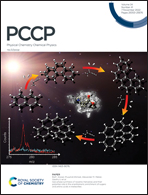Experimental measurement of electro-chemo-mechanical properties of a composite silicon electrode in lithium ion batteries
Abstract
The applications of silicon (Si)-based electrodes in lithium ion batteries have been impeded by mechanical degradation caused by lithiation/delithiation-induced volume changes. Understanding the evolution of mechanical behavior and properties of Si composite electrodes during electrochemical cycling is indispensable to develop coping strategies and predict battery life. In this study, we optimized an in situ method for measuring electro-chemo-mechanical properties, including partial molar volume, elastic modulus, and electrochemical reaction-induced stress, based on the curvature changes of cantilever electrodes. We found that the swell strain and partial molar volume of Si electrodes increase with the Li concentration. The elastic modulus generally decreases with the Li concentration. The in-plain stress transforms from tensile stress to compressive stress and showed an increasing tendency during further lithiation, while it shows a reverse trend during delithiation. The stress evolution correlates well with the “opening” and “closing” of micro-cracks in Si composite electrodes during cycling. These findings provide not only input parameters for battery modeling but also help understand the capacity fading of Si electrodes. Furthermore, the in situ measurement methodology developed in this study is readily applied to other battery electrodes.



 Please wait while we load your content...
Please wait while we load your content...